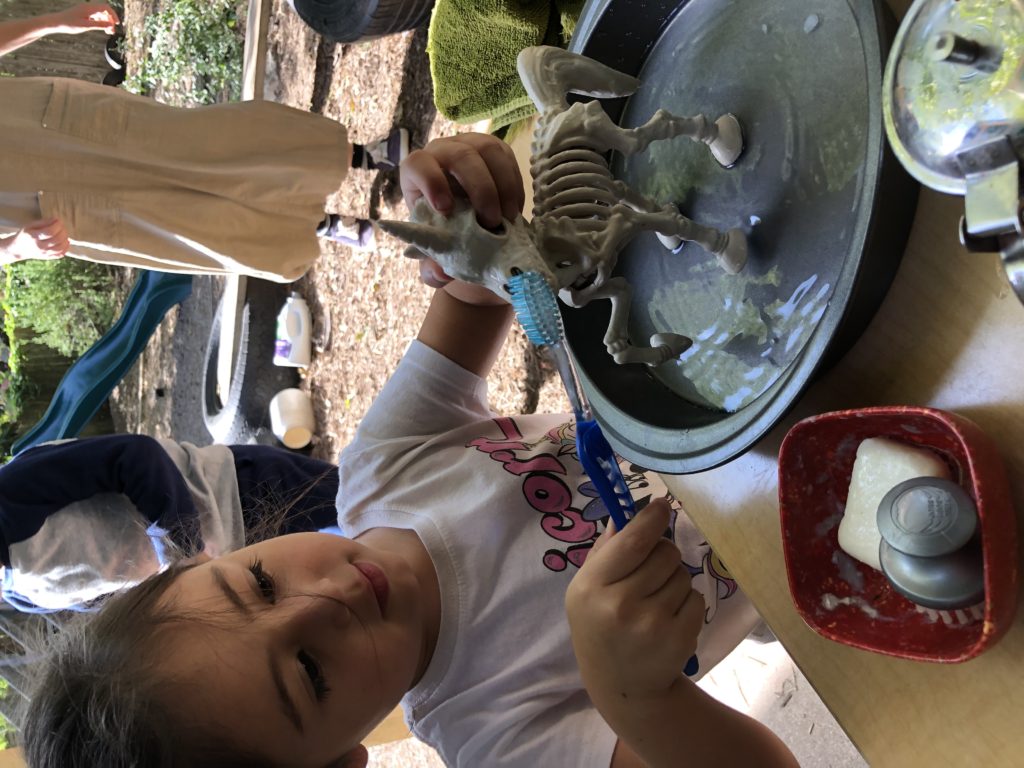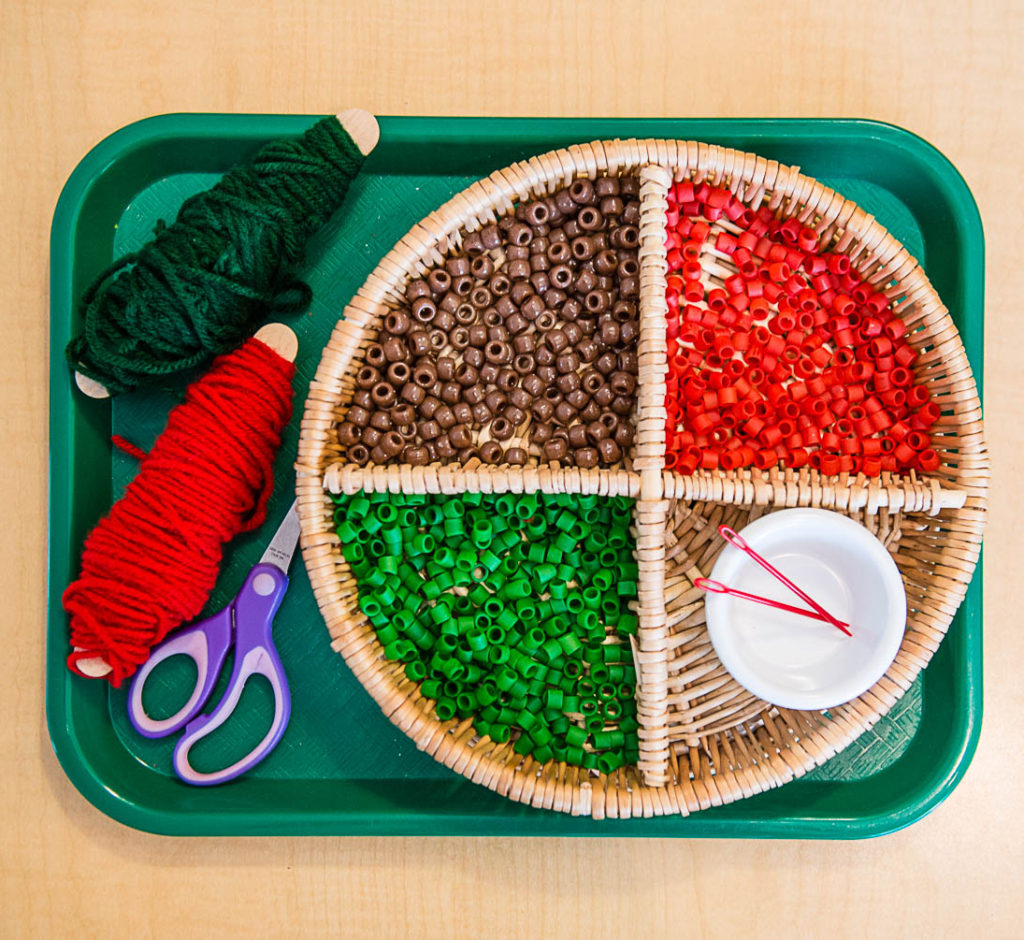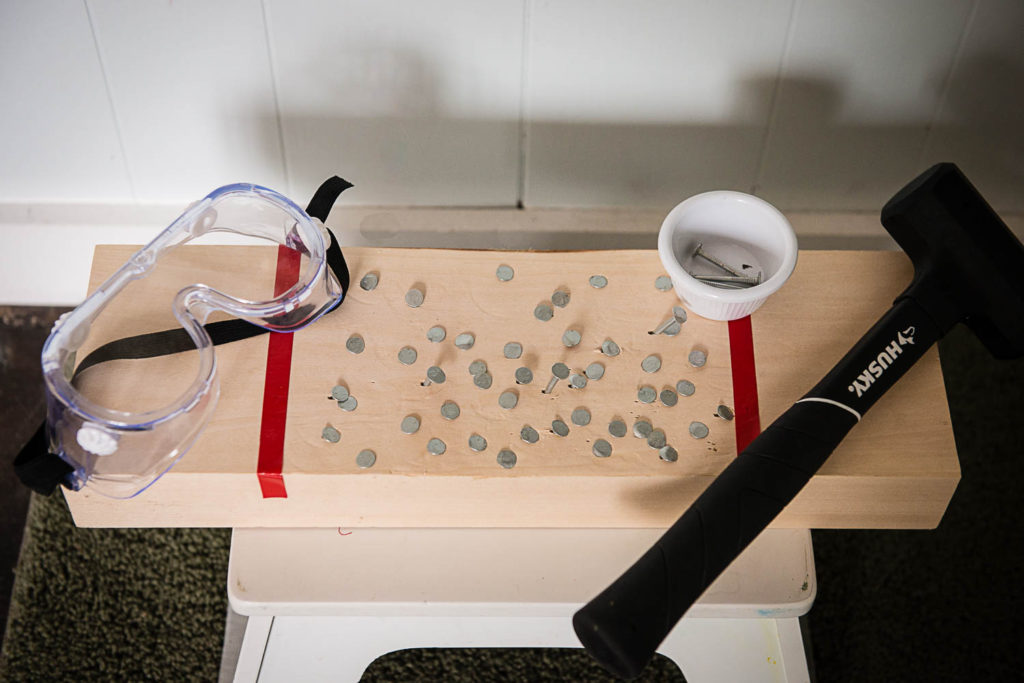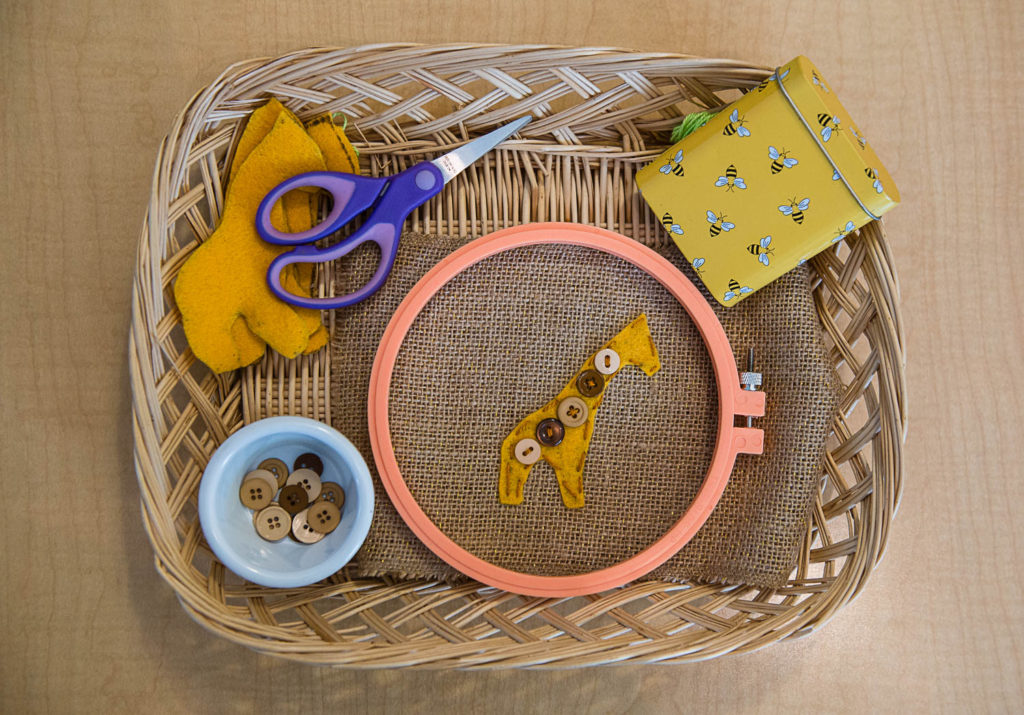The Practical Life of a Montessori Child

When you ask a child what she likes best about Highland Montessori, she’ll often answer with something like “hammering” or “sweeping” or “dressing the baby.” These fun activities may seem like play (well, they are) but they truly are the core of our busy classroom.
We all know that children are active. In fact, they learn about their world through movement. Picking things up, turning them around in the hand, sliding them along the floor. We encourage children to do any task that they are able. If the table is dirty, a child can clean it. If their shoe is untied, they can tie it. Spilled water? Wipe it up! Children LOVE doing things that prove their independence.
“If teaching is to be effective with young children, it must assist them to advance on the way to independence. It must initiate them into those kinds of activities which they can perform themselves and which keep them from being a burden to others because of their inabilities.”
–Maria Montessori, observing children over 100 years ago

We call this Practical Life–an important part of our curriculum. Activities such as pouring, wiping, setting a table, and opening and closing containers are attractive to our youngest students. The simple act of carrying a tray to a table or rolling up a workmat is a success for our youngest students.
Practical Life activities are demonstrated to the children, and the steps should be done in the proper order. If a child wants to pour water, she much carry the tray to the table, get a towel from the shelf, do the activity, clean up any spills and return all items to their place.

The popular activity of stringing beads (tray at right) is a favorite. While seemingly simple to adults, for children this is a complicated sequence. After bringing the tray to the table, they must choose a yarn and thread the needle. Then, tie a knot in the yarn–all before beginning the main activity with the beads.
Practical life is more than just activities; together with the sensorial materials, they are essential to a child’s development. The steps and coordination involved require the logical processing skills which are necessary to do math, writing and reading. Some of the tasks develop very specific motor skills. For example, as a child should be able to use a spoon or tongs before she’ll be able to properly hold a pencil. In fact, the success of using tongs or tweezers is our indicator that the child may be ready to start writing letters.
Pouring water, using tongs, washing a table, polishing metal, tying knots, raking leaves, being kind. These are everyday, mundane activities for us adults. Since children can do all of these things, they are also a part of our classroom. A big part.

Top shelf (“water works”): large sponge, ladle, pouring and small sponges
Middle Shelf: spooning, tonging, placing toothpicks into the shaker and pouring lentils.
Bottom Shelf: tongs, open/close Easter eggs and using clips.


sewing may be the capstone of our Practical Life shelves.
